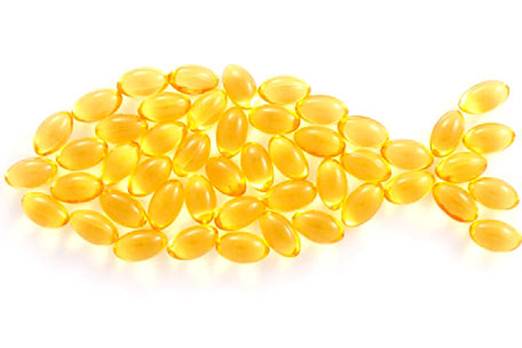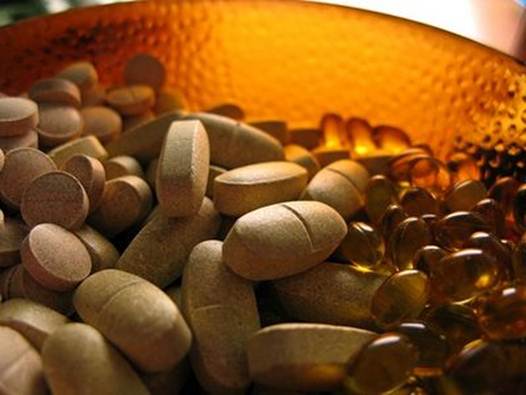6. The omega-3 fats in fish are interchangeable with those found in
flax and walnuts.
The main omega-3 fat found in plants,
alpha-Linolenic acid (ALA), is what's known as a short-chain omega-3, while
those in fish, docosahexaenoic acid (DHA) and eicosapentaenoic acid (EPA), are
referred to as long-chain omega-3s.

The
omega-3 fats in fish are interchangeable with those found in flax and walnuts
"The active omega-3s in the body—the
ones that need to get to certain sites, like the brain and the retina, and
accumulate there to exhibit the beneficial effects are DHA and EPA,"
explains Dr. Bruce Holub, an omega-3 researcher and professor emeritus in the
Department of Human Health and Nutritional Sciences at the University of
Guelph. It's these long-chain omega-3s that have been shown to improve heart
health, reduce in flam-mation, and possibly lower the risk for certain eye
diseases.
Since the body can't manufacture ALA from
scratch, it's the only omega-3 dubbed an "essential" fatty acid. But
while our bodies can convert ALA into DHA and EPA, the process, which takes
place primarily in the liver, isn't very efficient. "In all of the human
studies done to date that have assessed the capacity for conversion, the
average conversion efficiency from ALA all the way to DHA has been estimated to
be about four per cent," Holub notes, with women scoring somewhat better
than men.
That means the easiest way to get the
amount of DHA and EPA your body needs is to eat fatty fish or take a fish-oil
supplement. Dietitians of Canada and the American Dietetic Association suggest
getting 500 mg of DHA plus EPA per day for general health, and the American
Heart Association recommends double that amount for people who have coronary
heart disease. To put that in perspective, 85 grams (3 oz) of wild Atlantic
salmon contain more than 1,400 mg of DHA and EPA. However, in Canada, "our
average intake is only about 125 mg of DHA plus EPA per day," Holub says,
compared with 1,000 mg for residents of Japan.
Want to get some of your long-chain
omega-3s from other foods? Check labels for levels of DHA, dietitian Tsang
advises, since many products advertising added omega-3s contain only ATA. An
omega-3 egg, for instance, contains about 80 mg of DHA, along with roughly 300
mg of ALA. (Omega-3 eggs are obtained by feeding hens flaxseed: chickens are
capable of turning about 20 per cent of the ALA they consume into DHA.)
7. Everyone can reap health benefits from taking a multivitamin.
There’s no evidence multivitamins are
beneficial to healthy people 55 or older, Kirkland says. What's more, some have
the potential to cause harm: taking a formulation with too much extra iron may
cause liver damage. Marcone notes, while an overabundance of folic acid from
supplements and fortified foods (such as flour) can mask the symptoms of B12
deficiency (a common condition that, if unchecked, can lead to problems such as
permanent nerve damage) and encourage the development of certain cancers. (On
the other hand, it's virtually impossible to overdo folic acid by eating foods
containing folate, which our bodies turn into folic acid.)

There’s
no evidence multivitamins are beneficial to healthy people 55 or older
Consequently, "rather than taking
supplements on your own, it's a good idea to have a regular physical and blood
work," Kirkland says. A knowledgeable health professional can evaluate
your nutritional status and, if necessary, recommend an appropriate supplement.
If you decide to self-prescribe nonetheless, make sure you choose a multivitamin
formulated for someone of your age and sex; for example, those intended for
people 55 or older typically contain little or no iron. (Note: Health Canada
does recommend that everyone over 50 take 400 IU of supplemental vitamin D per
day, because, at that age, our skin becomes less efficient at manufacturing the
nutrient in response to sunlight exposure. Since 10 to 30 per cent of people
over 50 have difficulty absorbing sufficient B12 from food, the agency also
suggests people in this age group eat foods fortified with B12 or consider
taking a supplement.)
|
A Raw Chef? Really?
To the uninitiated, the phrase "raw
food" may conjure up mental images of unpeeled carrots and broccoli
florets, but the reality is much more complicated—and, reportedly, delicious.
For instance, in his raw-food classes, Toronto chef Doug McNish whips up
delectable offerings such as chocolate mousse, red-beet ravioli with creamy
cashew ricotta cheese and red-pepper marinara sauce, and berry cashew
cheesecake squares.
The theory behind eating raw is that
cooking at temperatures above 118°F (47.8°C) destroys much of the natural
nutritional content of foods, so any heating is done below this threshold,
sometimes using a food de-hydrator. (A high-powered blender and food
processor are two other key tools in the raw kitchen.) Some recipes also call
for soaking or sprouting nuts and seeds, which releases enzymes that make the
food easier to digest and increases levels of certain nutrients as much as
two- to three fold, according to McNish. His cookbook Eat Raw, Eat
Well: 400 Raw, Vegan and Gluten-Free Recipes
(Robert Rose) came out this spring.
|